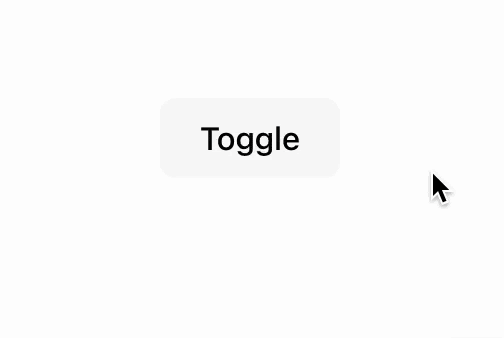Animations are like magic for web developers. They can turn a simple website into a lively and engaging one. But, creating animations from scratch can be complex and take lots of time. So, you need convenient tools that have pre-built components and APIs to build animations. Those are React animation libraries where you can add smooth, eye-catching animations to your React projects easily.
This blog will help you to find the right React animation library for your needs. I'll discuss different types of animations, key features to consider, and compare the top libraries in detail. Get ready!
>> Read more:
- Top 6 Best React Component Libraries for Your Projects
- 7 Best React State Management Libraries for Any Project Size
What are Different Animation Types?
Here are a few common types of animations:
- Transitions: These are smooth movements between UI elements that make your website feel more lively. Like, a button changing color when you hover or an element gently fading in when it loads.
- State Changes: Animations can signal changes in your app's state, users thus have valuable feedback. For instance, an animation plays when a form is successfully submitted, or an element expands to show more details.
- Keyframe Animations: This lets you create complex, multi-step animations. Like, a character bouncing across the screen or an element rotating in a fun way.
9 Popular React Animation Libraries
React Transition Group
React Transition Group is a great choice for those new to animation libraries. As an officially supported library from the React team, it integrates smoothly with your existing React codebase. With a set of core components, React Transition Group helps you manage how elements enter, leave, and animate within your React application.
Key Features of React Transition Group:
- Simple Animations: Handles basic effects like fading elements in and out, moving elements, and animating during component mounting and unmounting.
- Customization Options: You can customize animations using CSS transitions or JavaScript libraries.
- Lightweight and Efficient: It's designed to have minimal impact on your application's performance.
>> Read more: Tailwind CSS for React UI Components: Practical Code Examples
Code Example:
-
Installation:
npm install react-transition-group-
Usage: Fading in and out an element on mount and unmount.
// In App.tsx
import React, { useState } from 'react';
import { CSSTransition } from 'react-transition-group';
import './App.css'; // Create corresponding CSS classes
const App = () => {
const [inProp, setInProp] = useState(false);
return (
<div>
<button onClick={() => setInProp(!inProp)}>Toggle</button>
<CSSTransition in={inProp} timeout={200} classNames="fade" unmountOnExit>
<div className="box">I'm a fade Transition!</div>
</CSSTransition>
</div>
);
};
export default App;
/* In App.css */
.fade-enter {
opacity: 0;
}
.fade-enter-active {
opacity: 1;
transition: opacity 200ms;
}
.fade-exit {
opacity: 1;
}
.fade-exit-active {
opacity: 0;
transition: opacity 200ms;
}
Here is our result:

React Reveal
Key Features of React Reveal:
- Scroll Animations: Creates effects like fading in, bouncing, and sliding elements into view as you scroll.
- Easy Customization: Allows you to adjust settings like duration, delay, and easing for each effect.
- Minimal Impact: Keeps your application efficient without adding extra bulk.
As a React scroll animation library, React Reveal can create subtle, engaging animations that improve user experience without being overwhelming. But, for more complex animations or finer control over how they work, you might need to mix it with another tool or try other libraries.
Code Example:
-
Installation:
npm install react-reveal
-
Usage: Scroll-triggered animation.
// In App.tsx
import React from 'react';
import Fade from 'react-reveal/Fade';
const App: React.FC = () => {
return (
<div style={{ height: '200vh' }}>
<Fade bottom>
<div className="box">I will fade in from the bottom!</div>
</Fade>
</div>
);
};
export default App;
/* In App.css */
.box {
width: 200px;
height: 200px;
background-color: lightcoral;
margin-top: 20px;
}
Here is our result:

Framer Motion
Framer Motion is a top animation library for React with a user-friendly design and strong feature set. Personally, I like using this library due to its outstanding features, like:
- Simple, concise syntax to easily declare animations with minimal code, your codebase is so more readable and easier to maintain.
- Minimal configuration as the Motion API automatically generates animations
- Handle complex actions and event listeners like tap, drag, hover, and viewport interactions.
- Implement various animations easily, like spring (for natural, elastic motion), tween (time-based transitions), and inertia (momentum-driven movement). These are ready to use, but can also be fully customized to meet your needs.
- Built-in support for SSR, TypeScript, unmount animations, and more.
Despite strong features, Framer Motion takes a bit longer to learn than simpler libraries. But don't worry, it has clear documentation that can help both beginners and experienced developers. And believe me, once you get the hang of it, you'll feel less stressed working with this library because it manages complex animation logic seamlessly.
Code Example:
-
Installation:
npm install framer-motion-
Usage: Simple animation with a gesture.
// In App.tsx
import React from 'react';
import { motion } from 'framer-motion';
const App: React.FC = () => {
return (
<div style={{ display: 'flex', justifyContent: 'center', alignItems: 'center', height: '100vh' }}>
<motion.div
animate={{ rotate: 360 }}
transition={{ duration: 2, repeat: Infinity }}
whileHover={{ scale: 1.2 }}
style={{ width: 100, height: 100, backgroundColor: 'blue' }}
/>
</div>
);
};
export default App;
Here is our result:

React Move
React Move is a strong animation library for React that uses D3.js to add data-driven animations. You can animate everything from positions, and color changes to SVG elements, and more beyond just simple fades or slides. And, it is great for charts, graphs, and other data-rich displays due to smooth transitions that react to data changes. You can also adjust their timing, delays, and easing.
If you need creative freedom and full control over your animations, I recommend React Move. However, because it uses some D3.js ideas, it might have a steeper learning curve for beginners. If you're just new, let's try libraries like React Transition Group or React Reveal first.
Code Example:
-
Installation:
npm install react-move @types/react-move-
Usage: Animating a position change.
// In App.tsx
import React, { useState } from 'react';
import { NodeGroup } from 'react-move';
const App: React.FC = () => {
const [items, setItems] = useState([0, 1, 2]);
const toggleItems = () => {
setItems(items.length === 3 ? [0] : [0, 1, 2]);
};
return (
<div>
<button onClick={toggleItems}>Toggle</button>
<NodeGroup
data={items}
keyAccessor={(d: number) => d}
start={() => ({ opacity: 0, x: -50 })}
enter={() => ({ opacity: [1], x: [0], timing: { duration: 500 } })}
leave={() => ({ opacity: [0], x: [50], timing: { duration: 500 } })}
>
{nodes =>
nodes.map(({ key, data, state }) => (
<div key={key} style={{ ...state, position: 'relative', width: '50px', height: '50px', backgroundColor: 'lightseagreen', margin: '10px' }}>
{data}
</div>
))
}
</NodeGroup>
</div>
);
};
export default App;
Anime.js

GreenSock
GreenSock Animation Platform (GSAP) is not a pure React library, but it stands out for its performance and powerful features. It has an extensive toolkit that lets you create complex animations with precise control over many properties.
GSAP also works smoothly with React and other JavaScript frameworks or even plain JavaScript. Its wide range of features means you will need more time to master. But no problem, its thorough documentation and tutorials will make your learning process easier. If you are working on projects that need high control and performance, consider GSAP.
Code Example:
-
Installation:
npm install gsap-
Usage: Spring-based animation.
// In App.tsx
import React, { useEffect, useRef } from 'react';
import { gsap } from 'gsap';
const App: React.FC = () => {
const boxRef = useRef<HTMLDivElement>(null);
useEffect(() => {
if (boxRef.current) {
gsap.to(boxRef.current, { x: 100, rotation: 360, duration: 2 });
}
}, []);
return <div ref={boxRef} className="box" />;
};
export default App;
/* In App.css */
.box {
width: 100px;
height: 100px;
background-color: green;
}
React Motion
Code Example:
-
Installation:
npm install react-motion @types/react-motion
-
Usage: Simple spring animation.
// In App.tsx
import React from 'react';
import { Motion, spring } from 'react-motion';
const App: React.FC = () => {
return (
<Motion defaultStyle={{ x: 0 }} style={{ x: spring(100) }}>
{style => <div style={{ transform: `translateX(${style.x}px)`, width: '100px', height: '100px', backgroundColor: 'lightblue' }}>I move</div>}
</Motion>
);
};
export default App;
Here is our result:

Below is a table comparing 9 popular animation libraries for React projects, focusing on key features, learning curve, and ideal use cases.
|
Library |
Key Features |
Learning Curve |
Ideal Use Cases |
|
React Transition Group |
Basic animations like enter/leave/update for elements, built-in with React. |
Low |
Simple animation needs, component transitions, etc. |
|
React Reveal |
Simple library for animations on scroll or other events. |
Low |
Animations triggered by user interactions, basic reveals. |
|
Framer Motion |
Powerful animation library, visual editor (paid), advanced features like gestures. |
High |
Complex animations, interactive user interfaces, prototyping. |
|
React Move |
Rich animation options, precise control, data-driven animations (D3.js integration). |
Medium-High |
Advanced animation needs, data-driven visualizations, developers familiar with D3.js concepts. |
|
Anime.js |
Versatile library, vast animation options, pre-built animations, CSS integration. |
Medium |
Diverse animation needs, existing CSS integration. |
|
Remotion |
Code-based video animation using familiar languages (JS, HTML, CSS), real-time collaboration. |
Medium |
Explainer videos, marketing materials, video content with animation. |
|
React Spring |
Physics-based animations, intuitive control, composable for complex effects. |
Medium |
Natural-looking animations, interactive elements, complex animations. |
|
GreenSock |
High-performance animation library, extensive features, timeline-based animation. |
Medium-High |
Complex animations with precise control, high-performance requirements. |
|
React Motion |
Advanced animation control, physics-inspired approach, fine-grained customization. |
High |
Complex animations, data-driven visualizations, developers comfortable with advanced concepts. |
Best Practices for Choosing the Right Library
Consider Your Project Needs
- Basic vs. Complex Animations: Do you need simple transitions or more elaborate, physics-based animations?
- Data Integration: Do your animations need to react to data changes (e.g., charts, graphs)?
- Video Export: Do you need to export your animations as videos?
- Existing Codebase: Does your project already use CSS or D3.js that a library can integrate with?
Evaluate Your Team's Skills
- Animation Experience: How comfortable are your developers with animation concepts?
- Prior Libraries: Have they used animation libraries before? If so, which ones?
Think About the Learning Curve
- Time Constraints: How much time do you have to learn a new library?
- Project Complexity: Does the complexity of your animations justify a steeper learning curve?
By having specific answers for these questions, you can choose the suitable animation library that helps you create engaging and visually stunning animations for your React projects.
>> Read more:
- React 19: An Overview of the New Features and Improvements
- Mastering Axios in React.js for Effective API Management
Final Thoughts
React animation libraries offer a range of tools to bring your user interfaces to life more easily. You don't have to build everything from scratch. From simple transitions to more advanced, physics-based effects, these libraries can help you. But, the most important thing is choosing the right library, which will make your workflow more efficient.
Let's consider many factors like the project's need and your team's skills before deciding on the final animation library for React. Hope you will have the best choice. Happy animating!
>>> Follow and Contact Relia Software for more information!
- web development

